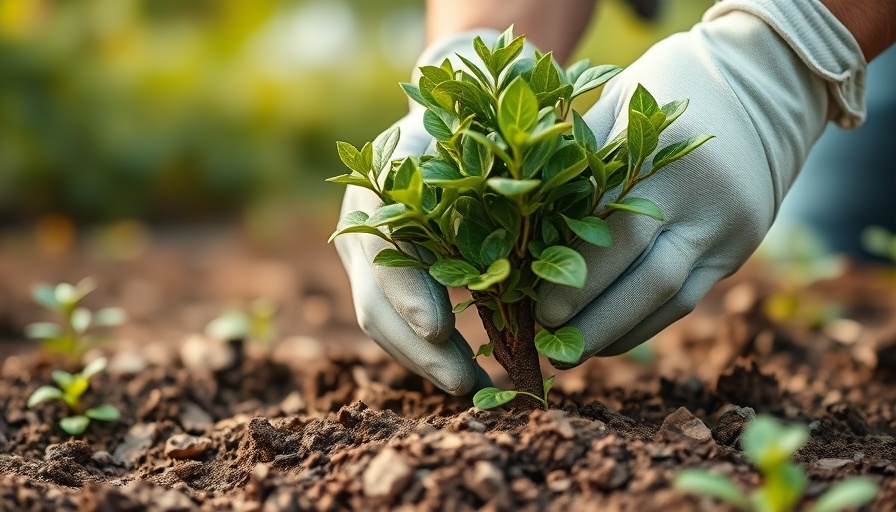
Transform Your Garden: The Art of Relocating Shrubs
As homeowners, we desire to create outdoor spaces that reflect our personal aesthetics and improve functionality. One innovative way to achieve this is by relocating shrubs, an often-overlooked aspect of garden maintenance that can significantly enhance your landscape. With the right approach, your garden can be transformed into a vibrant oasis, satisfying both your visual desires and plant health requirements.
Plant Health: The Advantages of Moving Shrubs
Relocating shrubs can lead to a plethora of benefits, most notably improved plant health. When done correctly, transplanting allows plants to bask in enhanced sunlight exposure and experience better air circulation. By moving overgrown or improperly placed bushes, you not only optimize their growth potential but also elevate your garden's appearance. This simple act not only rejuvenates shrubs but also fosters a more aesthetically pleasing balance—perfect for homeowners looking to modify their outdoor spaces. However, it’s crucial to evaluate the health of each plant prior to relocation, as weak or diseased specimens often do not survive the transition.
Avoiding Common Pitfalls: Essential Tips for Success
While the benefits of shrub relocation are numerous, it's equally important to navigate the process correctly to avoid common pitfalls. One major error is failing to prepare the new planting site before transplanting. Without pre-emptive organization, you risk exposing roots to the air, leading to dehydration. Additionally, watering practices are critical; overwatering can cause root rot while underwatering may lead to dehydration and poor root development. Understanding the mature size of your shrubs pre-transplant can also prevent overcrowding and ensure each plant has adequate space for future growth.
Timing is Everything: Choosing the Right Season
The success of moving shrubs hinges on timing. Transplanting during the plant's dormant phase, in early spring or fall, is advisable when growth has slowed. Avoid the sweltering summer months as they can put undue stress on your plants and lead to dehydration. Spring transplanting is optimal as roots can establish themselves before the vigorous summer growth, while fall provides cooler conditions that naturally aid in root development.
Personal Insights: The Emotional Connection to Gardening
For many homeowners, gardening isn't just a hobby; it's a source of pride and personal expression. The act of relocating shrubs can evoke feelings of nostalgia as you revisit the original intentions behind your outdoor design. Each plant has a story, whether that be lovingly planted by a family member or purchased during a particular season. Thus, moving them around doesn't just change the layout; it reaffirms your connection to your garden and can spark joy through new inspiration.
Looking Ahead: Future Trends in Landscaping
As we embrace a more sustainable approach to gardening, understanding how to maximize plant health through strategic changes is paramount. The trend of adaptive landscaping is on the rise, emphasizing the ability to modify garden layouts to meet evolving needs—whether it’s accommodating new preferences, responding to climate change, or creating spaces that support local wildlife. The ability to relocate plants effectively will be a key skill in the modern homeowner's repertoire.
Act Now: Your Next Steps in Enhancing Your Landscape
Ready to revitalize your garden? Now is the time to take action. Evaluate your shrubs, assess their needs, and plan for strategic relocations during the proper seasons. By doing so, you're not only enhancing the beauty and health of your landscape but also cultivating a connection to nature that can be both rewarding and transformative.
 Add Row
Add Row  Add
Add 




Write A Comment